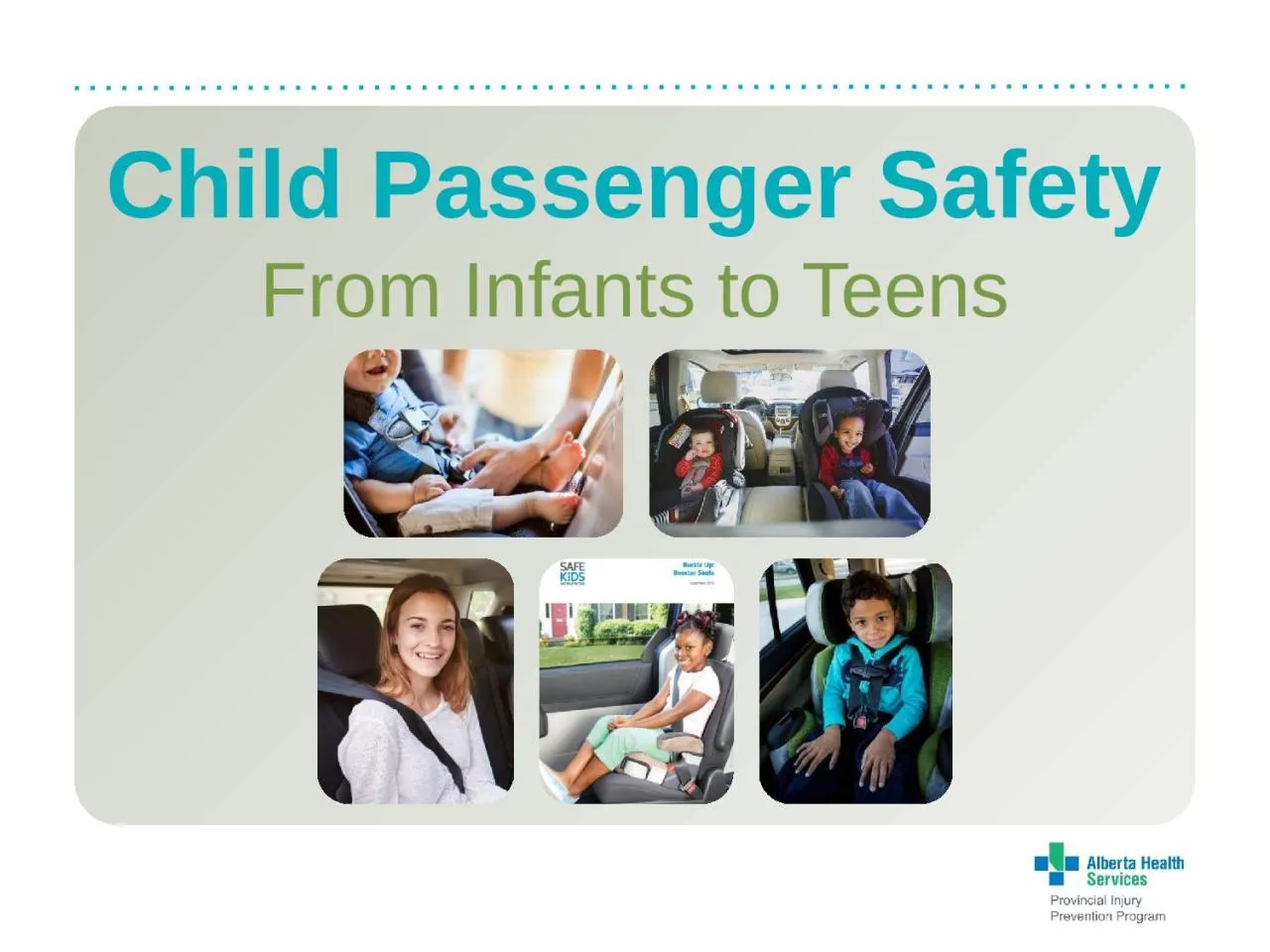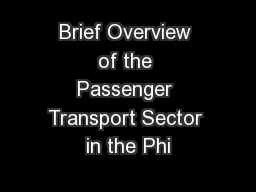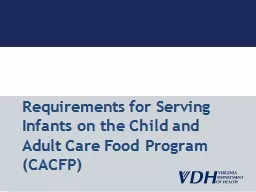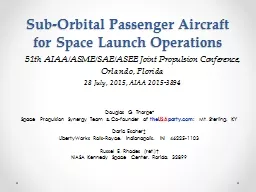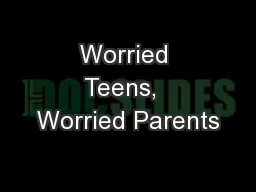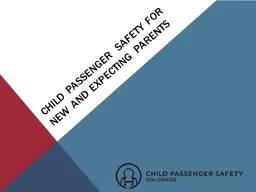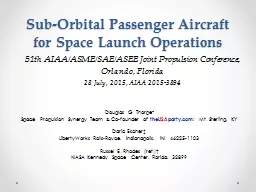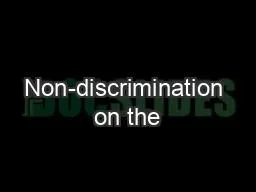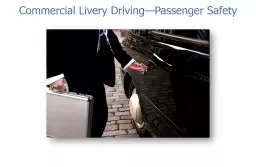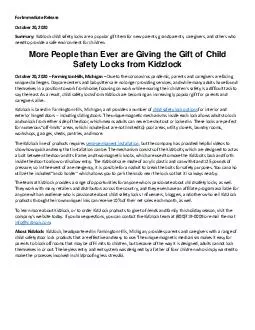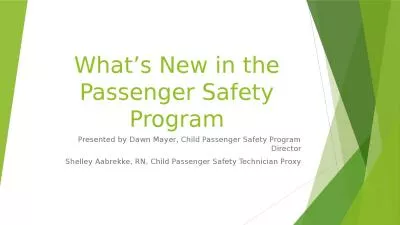PPT-Child Passenger Safety From Infants to Teens
Author : vivian | Published Date : 2022-06-01
Child Passenger Safety Why use car seats and booster seats Alberta law Common safety errors Car seat stages and types of car seats Tips for buying car seats and
Presentation Embed Code
Download Presentation
Download Presentation The PPT/PDF document "Child Passenger Safety From Infants to T..." is the property of its rightful owner. Permission is granted to download and print the materials on this website for personal, non-commercial use only, and to display it on your personal computer provided you do not modify the materials and that you retain all copyright notices contained in the materials. By downloading content from our website, you accept the terms of this agreement.
Child Passenger Safety From Infants to Teens: Transcript
Download Rules Of Document
"Child Passenger Safety From Infants to Teens"The content belongs to its owner. You may download and print it for personal use, without modification, and keep all copyright notices. By downloading, you agree to these terms.
Related Documents

